If you are a B2B marketer, you know the power of content marketing; what’s more, I bet you’re among 82% of B2B organizations that are actively using this superior technique.
If not, you miss a lot. Around 67% of business players state that content marketing helps create demands and generate leads, not to mention that it contributes to existing client dedication.
Let’s look into how exactly content marketing allows B2B businesses to get their prospect on board and consider the best ways to implement it in your customer engagement approaches.
What Is B2B Content Marketing?
Content marketing refers to producing and disseminating valuable and relevant informational materials to spark interest, engage, and convert a specific target audience to customers.
In the context of B2B, it’s a strategic approach used by companies that primarily view other businesses or organizations as their customers.
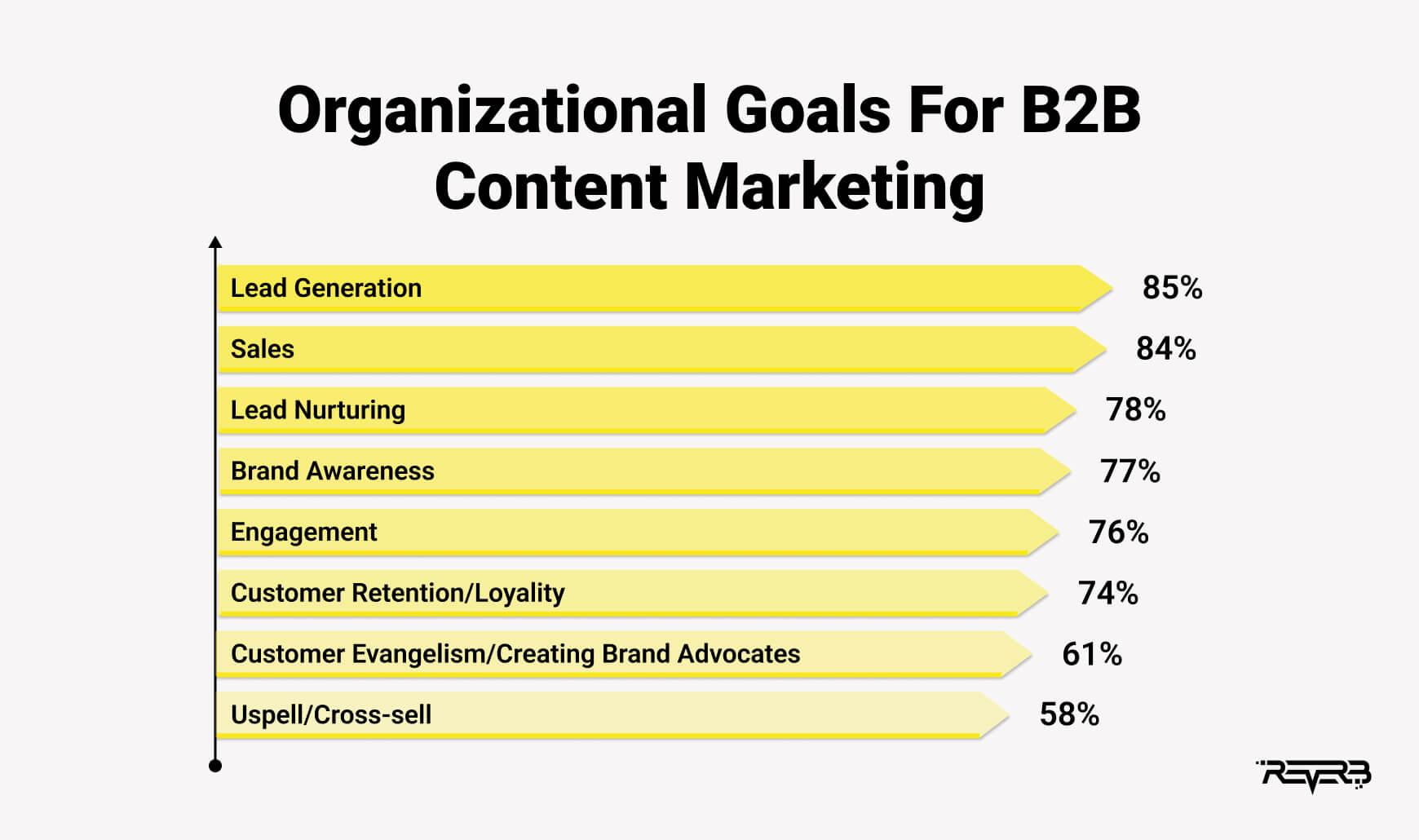
B2B content marketing concentrates on providing informative, educational, or entertaining media that address the specific needs, challenges, and interests of their prospects.
The results of your B2B content marketing statistics efforts depend on the following:
- Knowing your customer segmentation to understand their pain points
- Conducting thorough research
- Developing content strategies that align with the buyer’s journey
Why Is Content Marketing Important For B2B Lead Generation?
The digital business environment is flooded with ads that are daily thrown at consumers in tons. They directly promote products or services to end users. While still catching consumers’ eyes, many of those ads are simply ignored by consumers. Due to a consistent ad swirl, consumers lose interest and don’t treat ads seriously anymore.
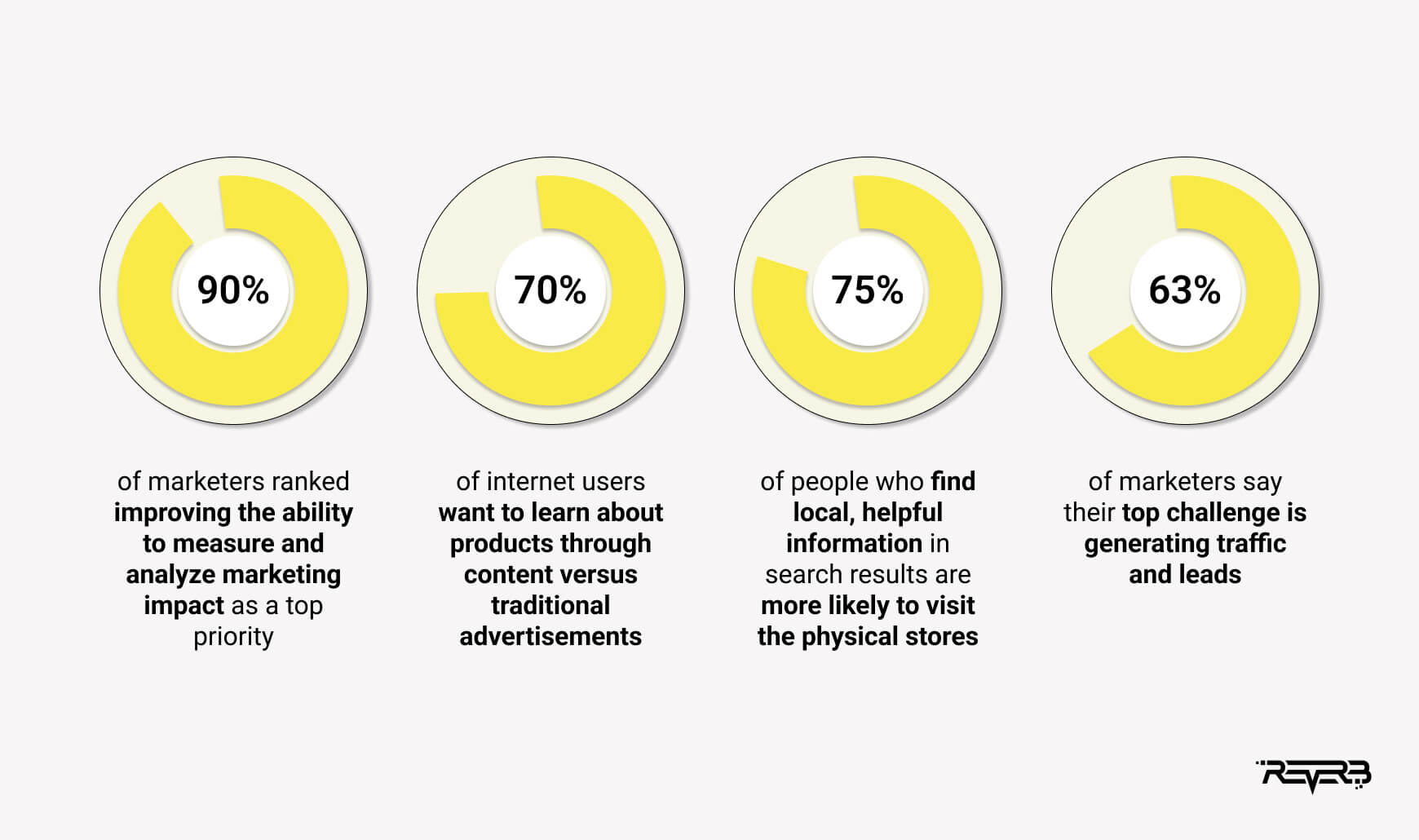
Native advertising through the content deploys a different principle. Rather, it reveals product or service value via informational materials that interest potential customers and engage them naturally. They don’t feel forced or pushed into a purchase and are given an opportunity to make a well-reasoned purchase decision. As such, without being too promotional, such a marketing approach is a powerful promotion too.
The Demand Metric survey shows that while costing 62% less than direct promotion methods, native advertising is much more effective, bringing three times more leads.
With that, according to the recent research of the Content Marketing Institute, nearly 87% of B2B marketers tend to prioritize the informational cravings of their potential customers over the organization’s advertising endeavors today.
7 reasons why content marketing matters for B2B lead generation
You might still wonder if it’s worth paying so much attention to content creation to reach the prospect pool. Here are a few solid reasons why it has an edge over traditional advertising in this concern.
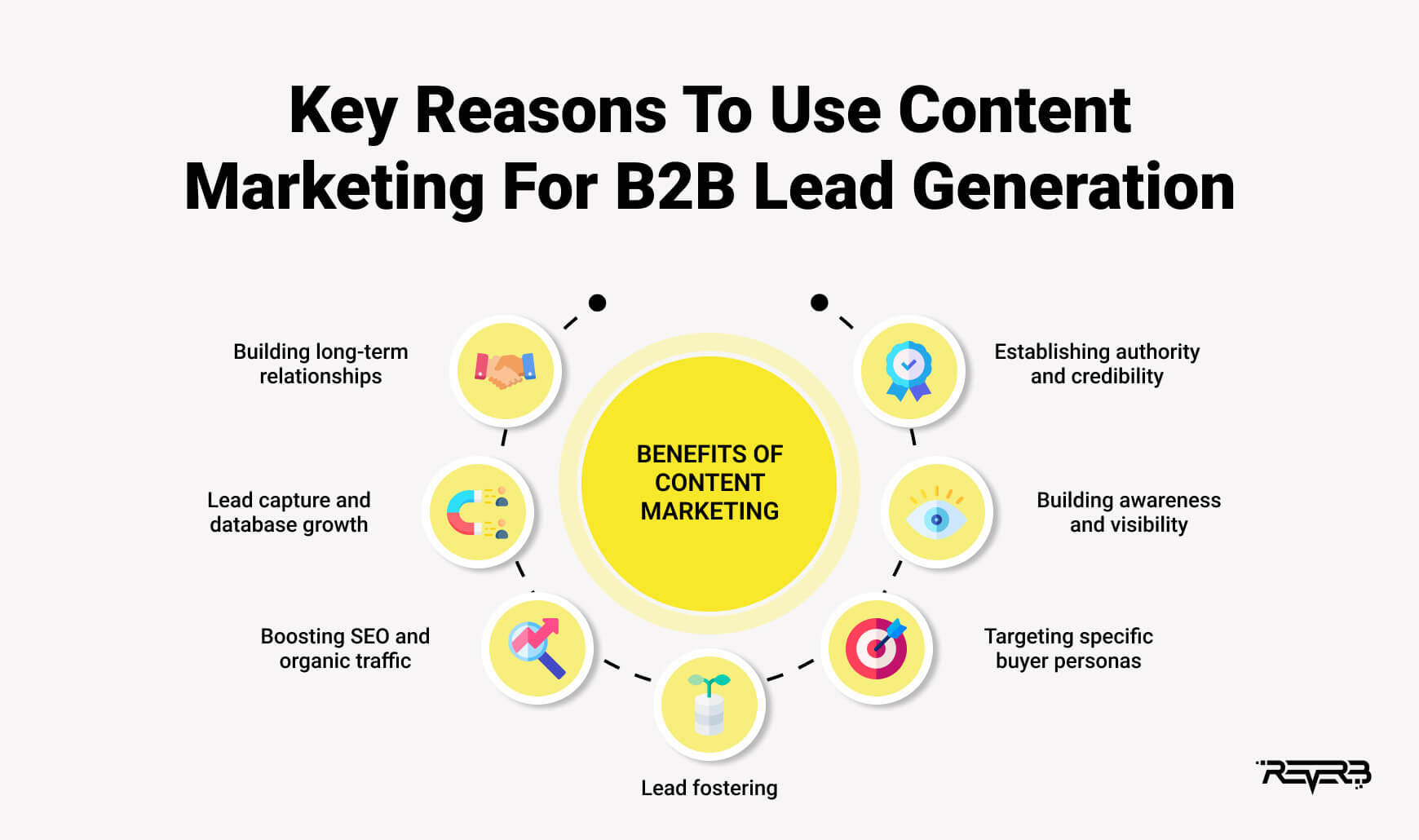
- Establishing authority and credibility: Quality, compelling content creation will define your brand as an industry thought leader. By sharing valuable observations, expertise, and meaningful info, you will induce your target audience’s trust and credibility. This authority will help get potential buyers hooked and convince them to engage with your brand.
- Building awareness and visibility: By consistently producing and distributing interesting materials through various channels such as blogs, social media, email newsletters, and industry publications, you can expand your reach and cover a wider audience. Improved visibility, in turn, will expose your brand to more potential leads and increase your chances of capturing their attention. Furthermore, effective customer engagement is essential in converting those leads into loyal customers.
- Targeting specific buyer personas: By understanding your buyer personas, you can develop informational materials that directly address their pain points and offers solutions to match their interests, cater to their specific needs, and tackle their challenges. Such a personalized approach attracts competent prospects who are more likely to engage with your brand and convert into customers.
- Lead fostering: Inbound marketing provides potential buyers with helpful insights at each stage of their journey, from awareness to consideration and decision-making. Nurturing builds trust, educates prospects, and helps naturally overcome objections, increasing the likelihood of conversion. A B2B marketer can leverage inbound marketing strategies and lead nurturing techniques to effectively engage with prospects, build lasting relationships, and guide them through the buyer’s journey, ultimately driving higher conversion rates. Utilizing email nurture examples can provide practical insights into crafting messages that resonate with leads at different stages, enhancing the overall effectiveness of your campaigns.
- Boosting SEO and organic traffic: Quality digital materials relevant to your sector and target audience improve your website’s search engine optimization (SEO). By incorporating relevant keywords, tailoring meta tags, and creating exciting info pieces, you enhance your website’s visibility in search engine results. Increased natural traffic to your website means more potential leads discovering your brand and engaging with your content.
- Lead capture and database growth: Native advertising allows for capturing prospects via gated content such as whitepapers, published ebooks, case studies, or webinars. To access these resources, users are required to fill in contact info, thus, giving you an opportunity to grow your potential customer portfolio. Captured leads can be further guided through the sales funnel for conversion.
- Building long-term relationships: You can also establish and nurture relationships with potential leads even before they are ready to make a purchasing decision. If you consistently deliver quality content, you can build an experience based on trust, credibility, and expertise. When thinking over a buying decision, leads are more likely to choose a brand they have an existing relationship with.
Choosing The Right Content To Generate B2B Leads
When it comes to B2B lead generation, using the right type of digital media is vital for attracting and engaging potential clients. The business audience targeted by B2B organizations is more demanding than individual consumers. You’ll have to sell your products or services to professionals who already have particular industry expertise. They are well-prepared and more demanding.
Hence, to create compelling content that will speak to your advanced audience, you should do the following:
- Know your marketing and sales goals;
- Outline your buyer personas to know their specific needs, interests, issues, and expectations;
- Figure out how your brand and product or service offers match your audience story and find appropriate contact points;
- Diversify info forms to meet your audience’s interests, priorities, and emerging objectives at different customer journey stages.
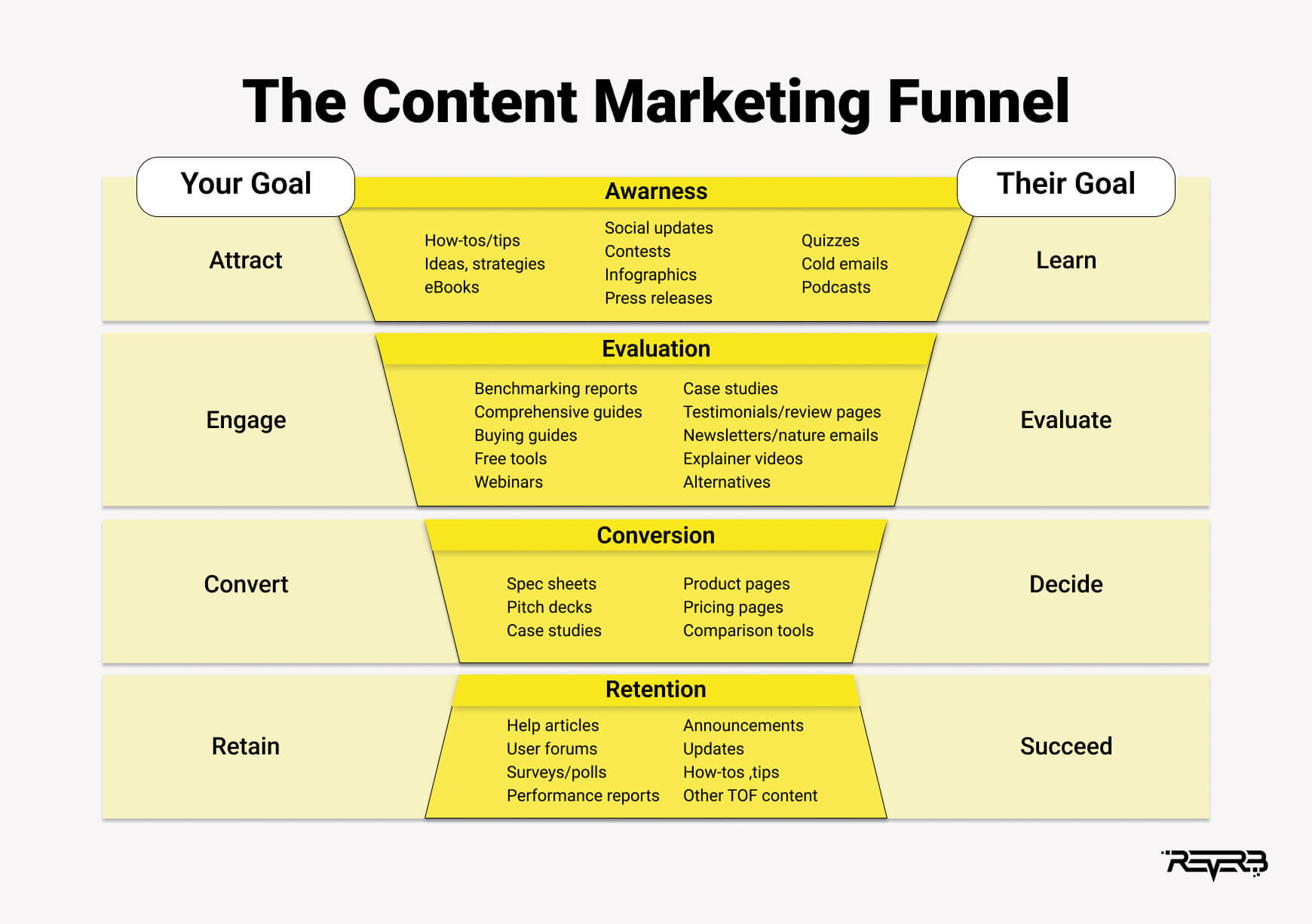
Which content will bring more B2B leads? Basically, it should resonate with your audience. Otherwise, it will be ineffective. While there is no one-size-fits-all formula for all B2B business scenarios, certain types of content better work for lead generation in this sector than others. Let’s define the most effective content types for your B2B business.
1. Social media content
Greatly contributing to your online business profile, social media is also a simple way to grab the attention of potential customers and ignite their interest. Users might randomly stumble over your post on social media and learn about your product they’ve never seen before.
Create engaging digital media for your social media channels, such as LinkedIn, Twitter, Facebook, or specialized forums. Post useful industry insights, success stories, or quick tips that draw people to your website and drive engagement.
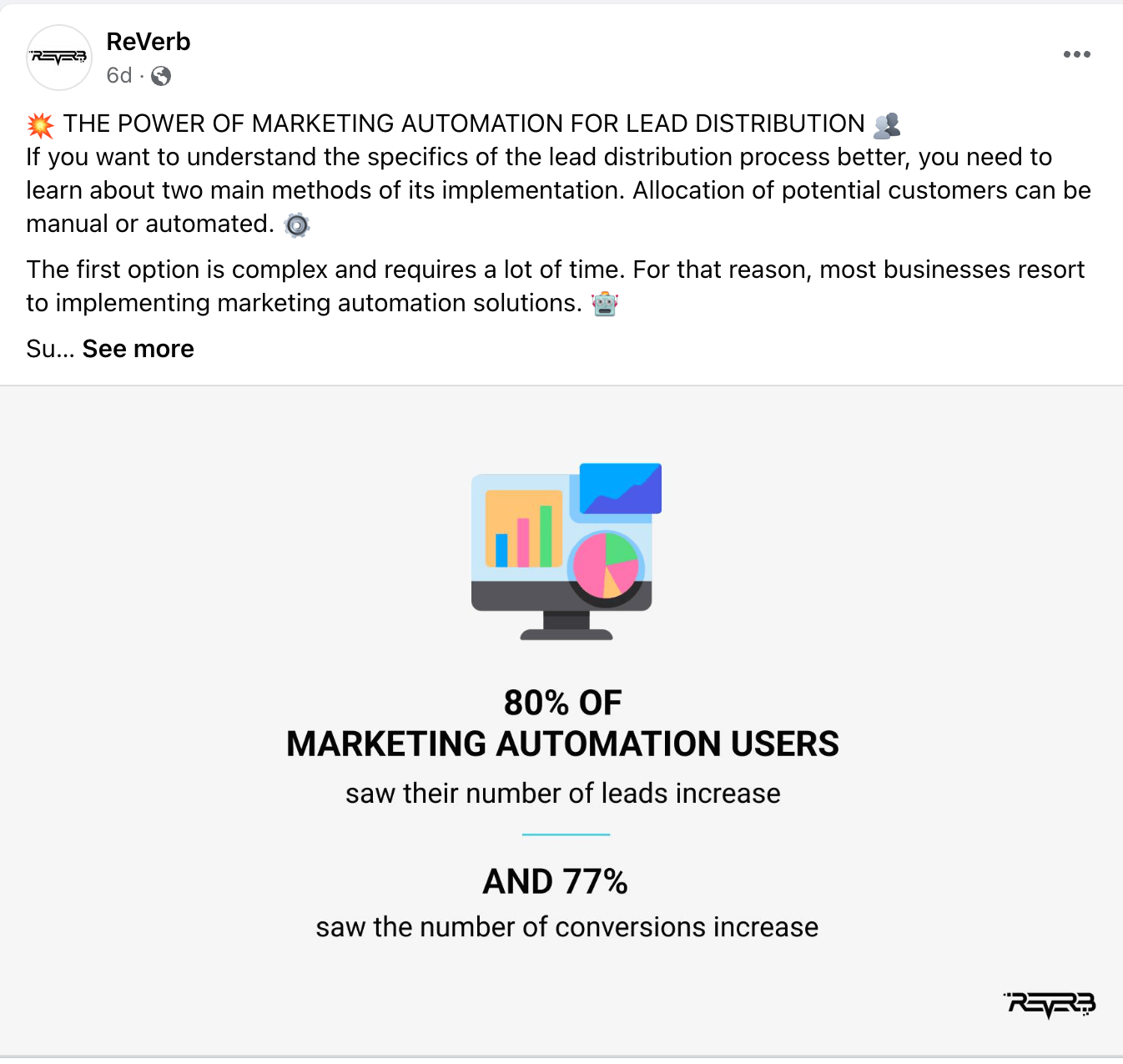
Your subscribers might choose to share your materials with their contacts and further expand your lead generation opportunities. More than 84% of B2B ventures share business content on Linkedin alone.
2. Blog posts
Blog posts are vital for SEO. By using targeted keywords and following essential SEO writing rules, you’ll bump up your search engine rankings and make your content more visible.
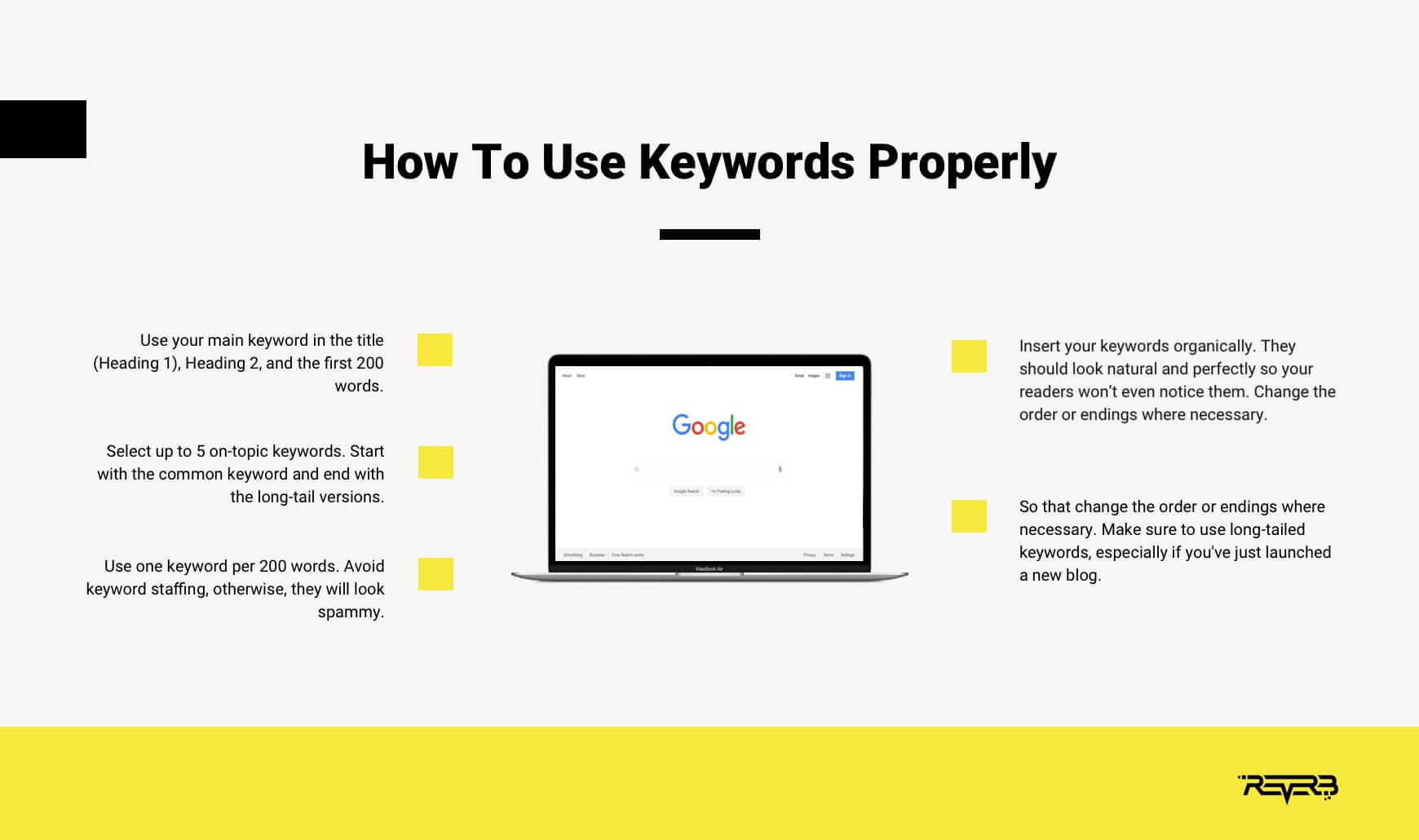
You can write blog articles on brand-related topics or important issues or create educational materials that will help your prospects settle some problems or eliminate pain points.
59% of B2B marketers rely on blog articles as their most valuable content channel. They offer a simple way to share your expertise and professional knowledge with your prospects, give helpful advice, and discuss just about anything.
Following the content marketing statistics, about 67% of B2B organizations that publish post blogs under a regular schedule report more monthly leads than those companies that don’t use blogs.
3. Email newsletters
Do you know that 77% of B2B companies view email newsletters as the core of their content promotion plan? It’s an impressive result, given that many organizations have moved that marketing tool to the back burner with the rise of other digital promotion methods.
Your newsletter subscribers will become your direct communication line to share your industry insights, product updates, and special offers, as well as your other materials such as blog posts, webinars, flip books, etc.
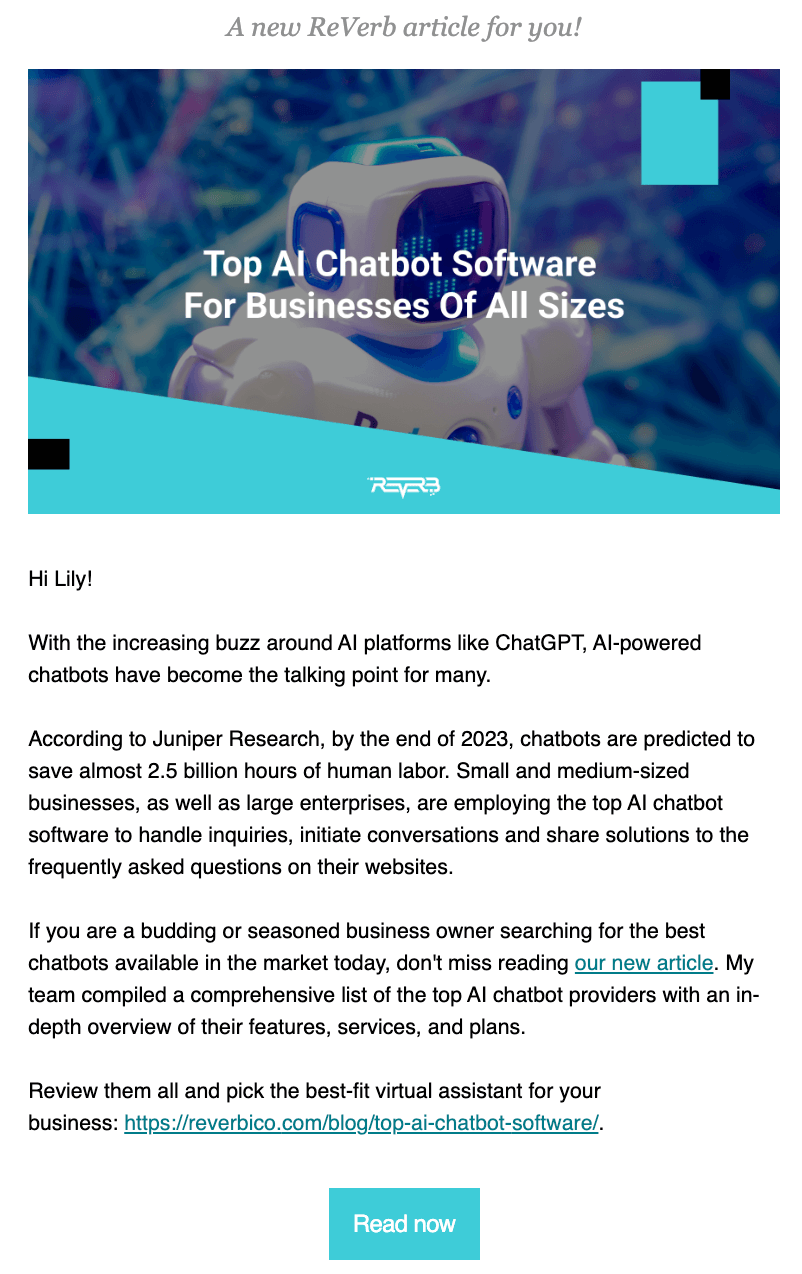
By encouraging recipients to forward the newsletter or distribute it among colleagues, you’ll be able to expand your reach further and increase potential leads.
4. Case studies
Over 84% of B2B customers gravitate to starting their research with referrals. Case studies showcase successful implementations of your product or service to demonstrate the value and results you’ve delivered to existing clients, which can be of use to potential customers facing similar problems.
Case studies prove that your organization lives up to its promises, thus, indirectly selling your brand, keeping potential buyers engaged and inspired to take further action.
5. Gated content
Gated content refers to downloadable resources, interactive tools, online assessments, and any materials that call for a visitor to register or provide their contact info to get free access.
Usually, these are in-depth resources that provide valuable insights, research findings, or practical solutions to industry challenges, such as whitepapers, eBooks, webinars, industry reports, expert guides, and tutorials.

54% of decision-makers spend over an hour a week reading thought-leadership content to stay on top of industry trends and tendencies. And gated content marketing hacks enable marketers to establish thought leadership, set up their brand as a trusted resource, engage with prospects, and address their pain points. By capturing lead information, you can nurture those leads through follow-up emails.
6. Visual content
Lengthy sheets of pure text look rather boring than inviting. Visual content will make your textual pieces more comprehensible and engaging. Besides, visual materials can be highly shareable and easy to analyze.
You can create infographics to present industry statistics, trends, or research findings. Try to make them visually appealing and informative, and include a call-to-action directing viewers to your website or landing page to generate leads.
In addition, 80% of marketers say that video boosted their sales growth. Videos can convey complex information in an easy-to-perceive format. Host product demos, explainer videos, or customer reviews on your website or publish them on social media platforms to attract leads.
How To Use Content Marketing For Lead Generation
At this point, it’s clear that inbound marketing can become a game-changer when it comes to B2B lead generation. Here are quick instructions on how to make the most out of your content marketing efforts to boost lead generation:
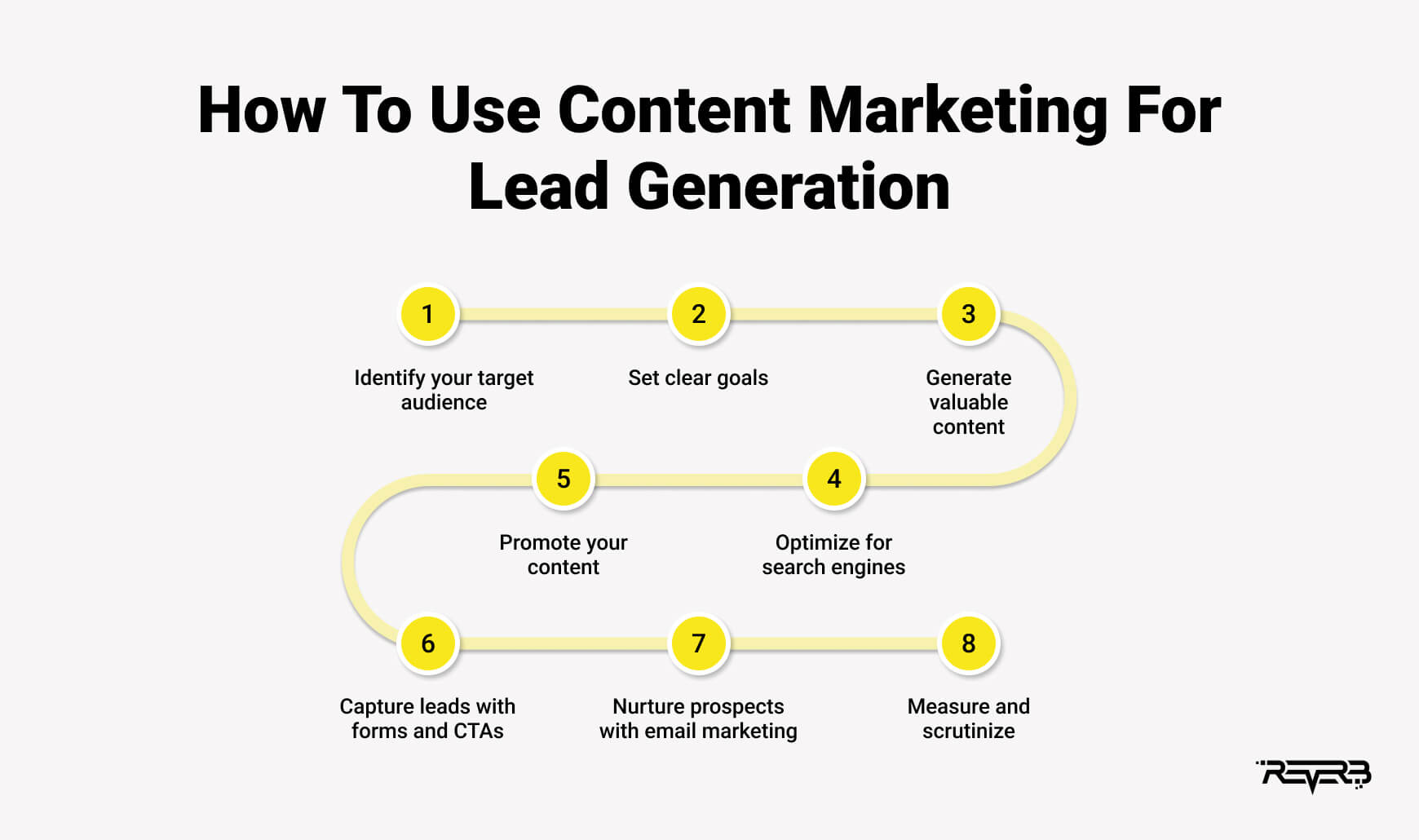
- Identify your target audience to embrace the interests and needs of your ideal customers and create informational materials that resonate with them.
- Set clear goals to determine what you want to achieve with your native advertising efforts.
- Generate valuable content to solve your target audience’s problems, answer their questions, and provide actionable insights.
- Optimize your media for search engines by incorporating keywords often used by your target audience in your content to improve its visibility in search engine results.
- Promote your content using various channels to ensure it hits the right audience and attracts their attention.
- Capture leads with forms and calls-to-action by offering valuable resources or incentives in exchange for the user’s contact information.
- Nurture prospects with email marketing to build relationships and gently guide them through the buyer’s journey.
- Measure and scrutinize your promotional efforts and essential performance metrics to refine your strategy and optimize future content.
Conclusion
Content marketing is an effective way for businesses to build brand awareness, establish thought leadership, foster customer loyalty, and drive profitable customer actions by providing valuable information and building relationships with their target audience.
It’s a long-term strategy, though, that requires consistency and continuous improvement. When working with ReVerb, you’ll get the opportunity to regularly nourish the interest of your prospects with meaningful and helpful content. By proving to be a trusted resource, you’ll continuously generate high-quality leads for your B2B business.
Author Bio

Roy Emmerson is a passionate technology enthusiast with a deep interest in software development. In addition to being a skilled programmer at a custom software company, he is also a loving father of twins who inspire him to stay up-to-date with the latest technological advancements. With his co-founding of TechTimes.com, Roy has a keen eye for identifying emerging trends and innovations in the tech industry.













